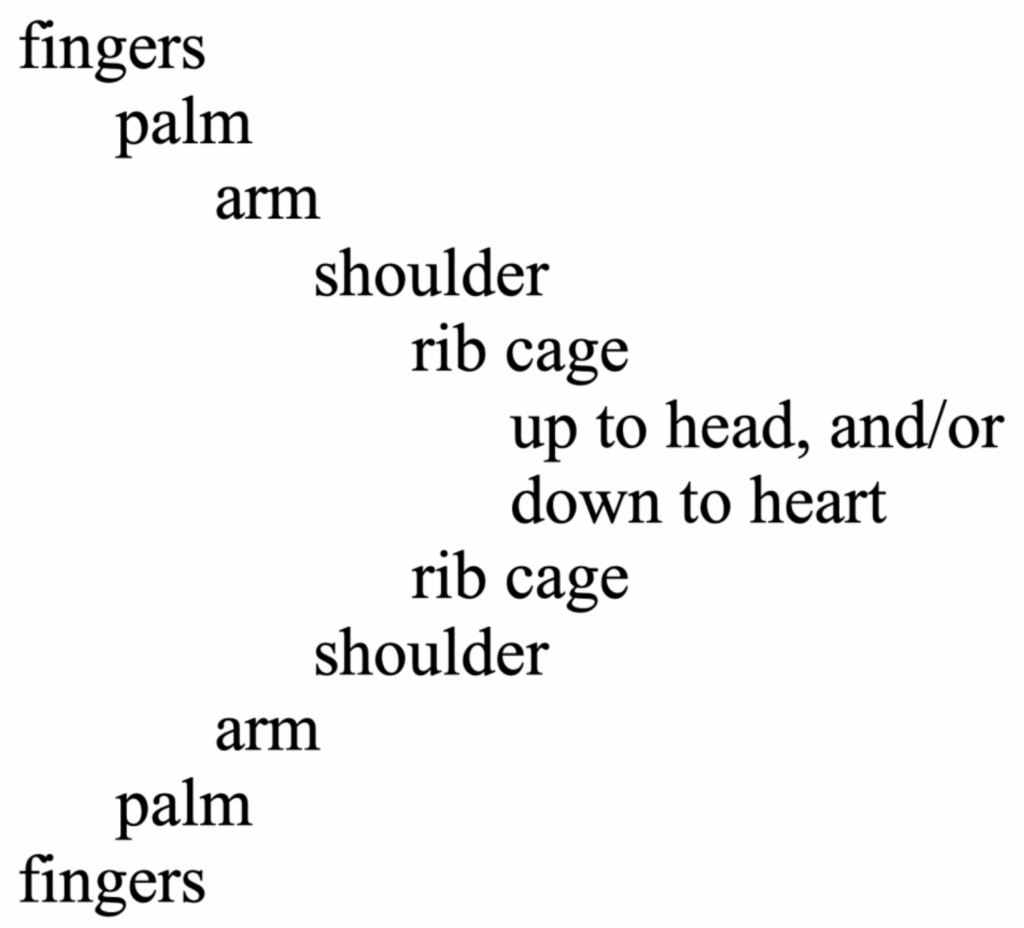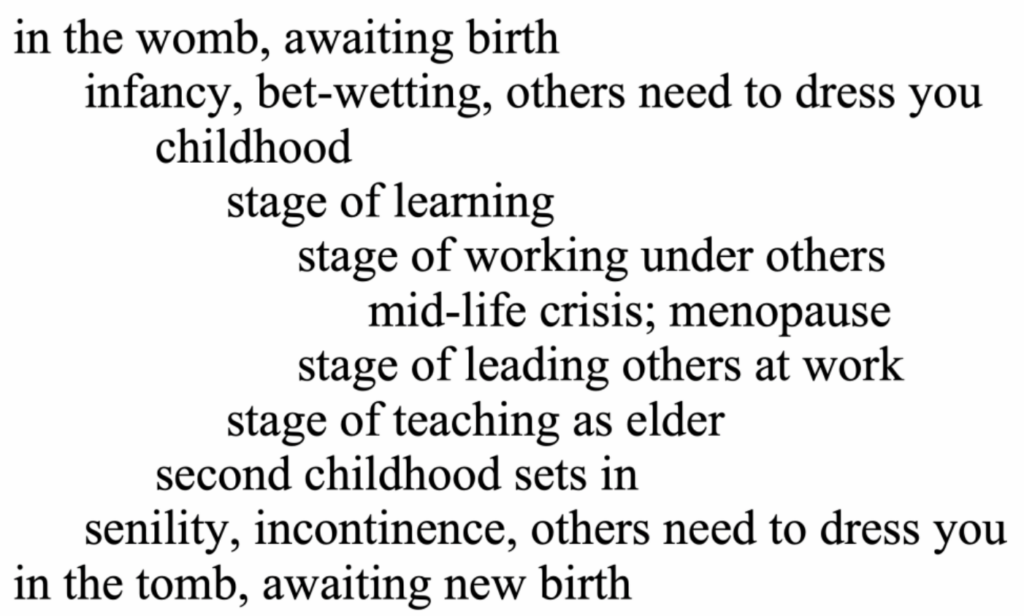The chiastic shape corresponds to the shape of human life. This should not surprise us, because we are made in the image of God, and God is manifest in Word and Spirit. If we are living epistles, our lives will look a bit like the literary shape of the books and book-sections (pericopes) of the Bible. If we are borne along by the Spirit, our lives will move in the same pattern the Spirit moves, which is also chiastic.
This matter is so obvious that we don’t notice it. But consider: The very shape of our body can be considered chiastic from left to right, though not from bottom to top:

Turning from “text shape” (Word) to “movement shape” (Spirit), consider the shape of an average day in your life.

Consider the normal whole life:

Notice that the stage of learning (around 7 to 20) matches the true meaning of the stage of eldership (around 60 to 70), when we have much to pass on to others. In the middle of our lives, we are working, but also being frustrated at the seeming shortsightedness of those over us. At some point, men have a crisis, and for women the crisis is menopause. After such crises, we are better able to govern others we work with. This middle part of life varies greatly from person to person, but something like it is normal.
The crisis is a sense of death, an awareness that what we had hoped to do as younger persons will not fully come to pass. For men this is tied to their work, and their hopes of accomplishment. For women this is tied to the departure of their adult children, and to menopause. People’s lives are significantly reoriented after such crises, and there can be more than one of them. We are humbled through such crises, and become much better able to lead others afterwards.
Or, consider going to the market. You gather up your money, leave your home, make the trip to market, enter the market, transact your business, leave the market, make the trip home – probably going in reverse past everything you passed on the way to the market, enter your home, and put what remains of your money away.
War is declared. The men are called from home. They are mobilized into the army. The men go off to battle. The war is fought. The men come back from battle. The army is demobilized. The men go home. War is over.
Not everything in human life is chiastic, of course, any more than every single passage of the Bible is chiastic. For instance, while you are at a supermarket, you select a basket after entering, and afterwards return the basket before leaving; but while you are shopping you select an item and put it in the basket, and then you select another and put it in the basket, and then another, and another. These actions are not chiastic but parallelistic. Moreover, after making all your selections, you get in line and pay for your selections. This event climaxes all the parallel actions of selecting items, but it may have no chiastic relation to your selection.
All the same, if you selected many things there will be a chiasm in the way you are charged for them. The last things you selected will be on top of your basket, and these will be counted first; while the first things you selected, which are on the bottom of your basket, will be counted last.
As can be seen, very much of human life is “there and back again,” or chiastic. This is how God has designed human beings to live in the world. It is so obvious that we don’t notice it. But it is everywhere. This shape of human life arises ultimately from the give and take of the three Persons of God, as the Father sends the Spirit to the Son and the Son sends the Spirit back to the Father. We can see that literary chiasm is not a mere curiosity, a mere poetic device to structure the text. It arises from the very life of God, and is played out in the structure of the lives of the images of God in many ways and at many levels. It is because human beings live and move so often chiastically, that poets often find themselves drawn to chiastic writing. God creates chiasms out of His inner life, and so do the images of God.
Biblical chiasms are perfect. That is, they are perfectly matched to the human chiasms they address and transform. As we become more and more sensitive to Biblical chiasms, we will become more and more sensitive to one aspect of the true nature of human life under God. We will be transformed from bad human chiasms into good human chiasms. In this way, becoming sensitive to chiasm can be of practical transformative value to human life, though in deep ways that probably cannot be explained or preached very well.
One further thought. Chiasms often have a double climax, one in the middle and the greatest at the end. The food we bought at market is put away in the cupboard and refrigerator when we get back home. Moving forward to a final climax is what all literature does, whether it has a middle climax or not. (Shakespeare’s five-act plays always move to a climax in the third and in the fifth acts.) This is just another way that human life matches literary production, in the Bible as well as in uninspired human literature. Becoming familiar with the shape and flow of Biblical texts will have a transforming effect on human life.
James Jordan is scholar-in-residence at Theopolis. This article originally appeared in “Biblical Theology Basics.”
